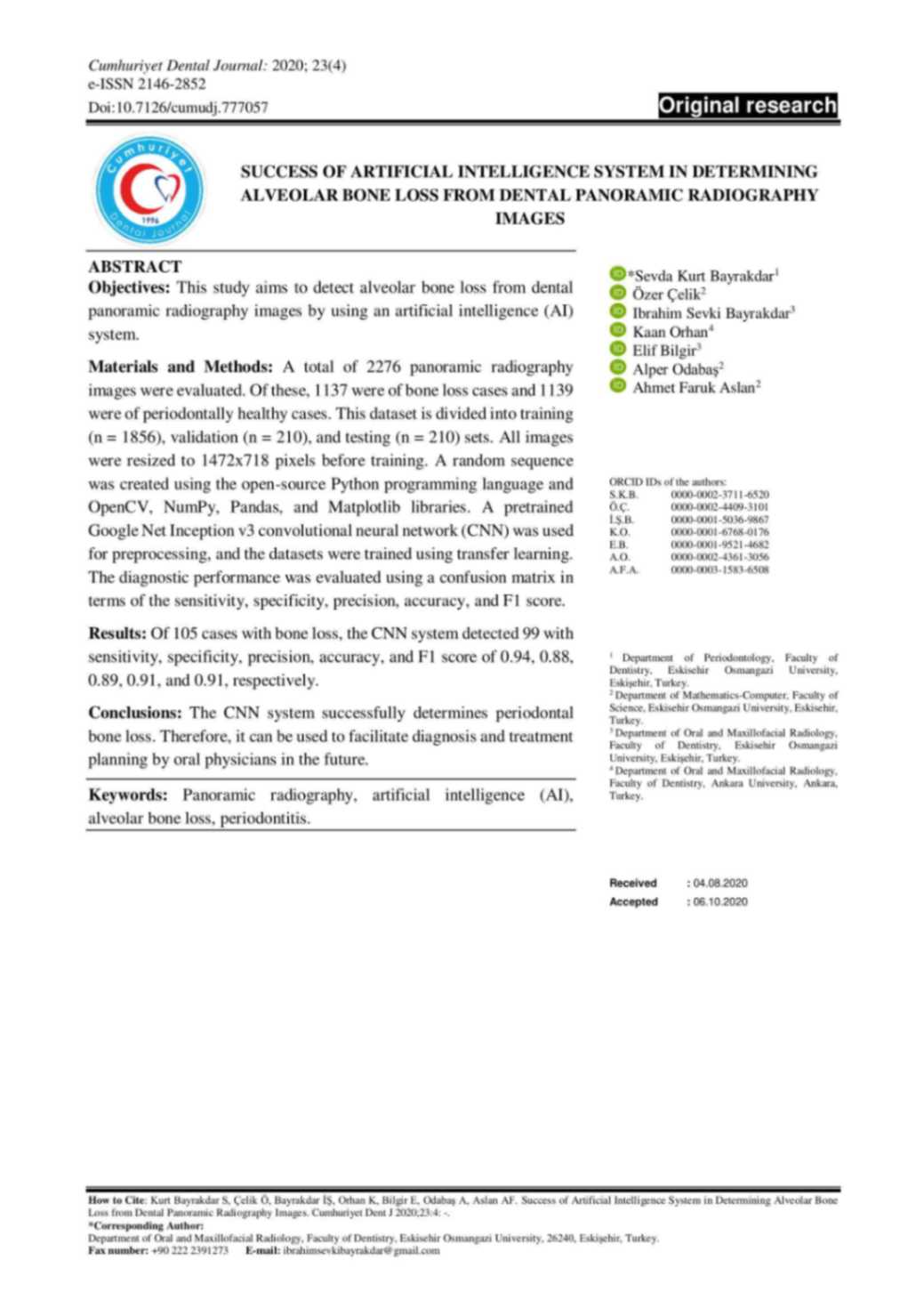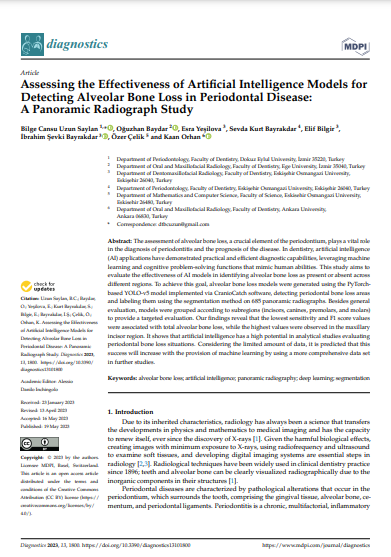The U-Net Approaches to Evaluation of Dental Bite-Wing Radiographs: An Artificial Intelligence Study
1. Introduction
- Overview: The study investigates the use of artificial intelligence (AI), particularly the U-Net convolutional neural network (CNN), in the evaluation of dental bite-wing radiographs.
- Significance: Bite-wing radiographs are crucial in dental diagnostics. Utilizing AI can enhance efficiency and accuracy in detecting dental conditions.
- AI in Radiology: AI, especially deep learning methods, has shown promise in medical diagnostics, reducing error rates compared to human observers.
2. Materials and Methods
- Data Collection: 500 bite-wing radiographs from Eskisehir Osmangazi University's Faculty of Dentistry were used. High-quality images were selected, excluding those with errors.
- Imaging: Radiographs were taken using the ProX periapical X-ray unit and stored in the CranioCatch labeling software.
- Image Labeling: Five dental diagnoses were labeled: dental caries, dental crown, dental pulp, dental restorative filling material, and dental root canal filling material.
- Model Development: The U-Net model was implemented using the PyTorch library. The model was trained on a dataset split into 80% training, 10% testing, and 10% validation.
- Training and Testing: The model was trained for 200 epochs with a learning rate of 0.0001. A computer with 16 GB RAM and an NVIDIA GeForce GTX 1660 TI graphics card was used.
3. Results
- Performance Metrics: The model's performance was evaluated using sensitivity, precision, and F1 scores. Results for each dental condition were promising:
- Dental Caries: F1 score of 0.8818, sensitivity of 0.8235, precision of 0.9491.
- Dental Crown: F1 score of 0.9629, sensitivity of 0.9285, precision of 1.
- Dental Pulp: F1 score of 0.9631, sensitivity of 0.9843, precision of 0.9429.
- Restorative Material: F1 score of 0.9714, sensitivity of 0.9622, precision of 0.9807.
- Root Canal Filling: F1 score of 0.9722, sensitivity of 0.9459, precision of 1.
4. Discussion
- Significance of Results: The AI model shows high accuracy and reliability in evaluating bite-wing radiographs. This can significantly aid dentists in clinical settings by reducing their workload and improving diagnostic efficiency.
- Future Implications: The study suggests further refinement and validation of AI models with larger datasets and different types of radiographs.
5. Conclusion
- Summary: The U-Net based AI model demonstrates the potential to automatically evaluate dental bite-wing radiographs accurately.
- Clinical Impact: Such AI models can support dental professionals by providing quick and reliable diagnostic assistance, enhancing patient care.
I Want to Write a Scientific Research Project
CranioCatch is a global leader in dental medical technology that improves oral care in the field of dentistry. With AI-supported clinical, educational, and labeling solutions, we provide significant improvements in the diagnosis and treatment of dental diseases using contemporary approaches in advanced machine learning technology.
CranioCatch serves thousands of patients with dental health issues worldwide every day with its innovative technologies. That’s why we eagerly look forward to meeting our valued dentists who wish to work in the field of 'Scientific Research in Dentistry'.



 Contact Us
Contact Us

